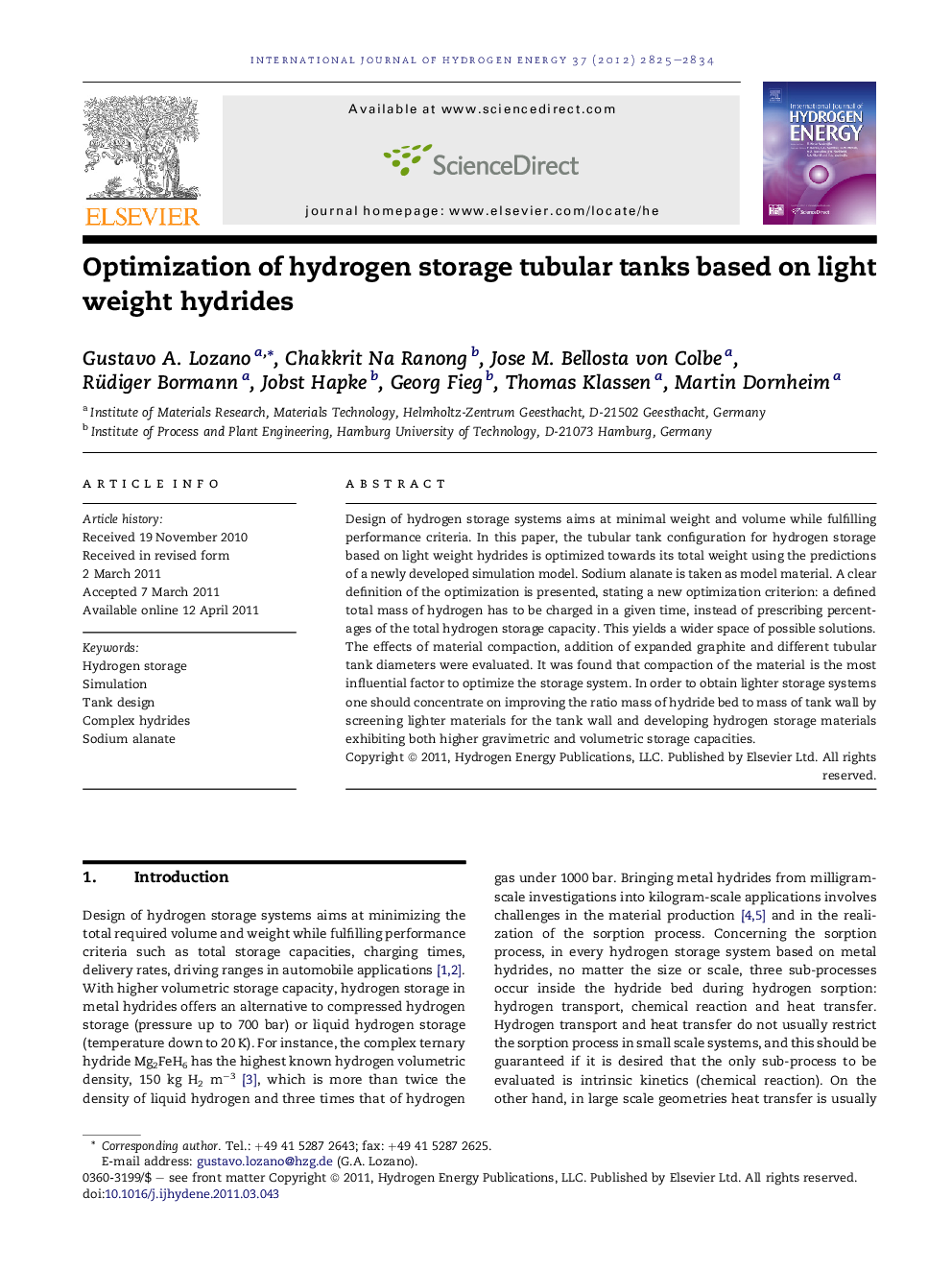| Article ID | Journal | Published Year | Pages | File Type |
|---|---|---|---|---|
| 1271710 | International Journal of Hydrogen Energy | 2012 | 10 Pages |
Design of hydrogen storage systems aims at minimal weight and volume while fulfilling performance criteria. In this paper, the tubular tank configuration for hydrogen storage based on light weight hydrides is optimized towards its total weight using the predictions of a newly developed simulation model. Sodium alanate is taken as model material. A clear definition of the optimization is presented, stating a new optimization criterion: a defined total mass of hydrogen has to be charged in a given time, instead of prescribing percentages of the total hydrogen storage capacity. This yields a wider space of possible solutions. The effects of material compaction, addition of expanded graphite and different tubular tank diameters were evaluated. It was found that compaction of the material is the most influential factor to optimize the storage system. In order to obtain lighter storage systems one should concentrate on improving the ratio mass of hydride bed to mass of tank wall by screening lighter materials for the tank wall and developing hydrogen storage materials exhibiting both higher gravimetric and volumetric storage capacities.
